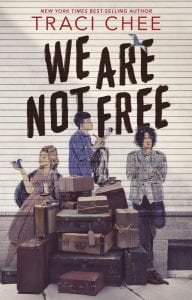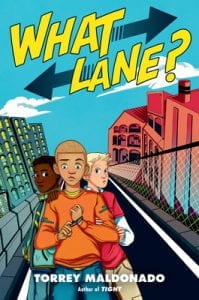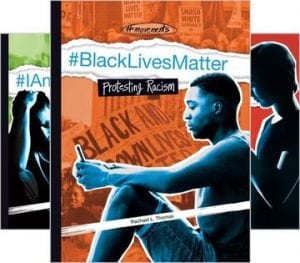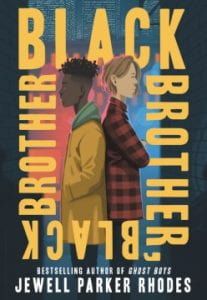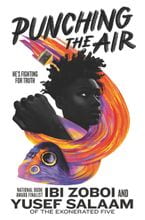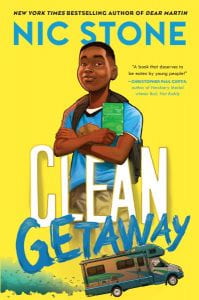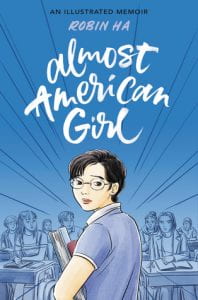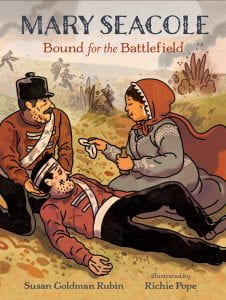 Reynolds, Jason, and Ibram X. Kendi. Stamped: Racism, Antiracism, and You. Little, Brown Books for Young Readers, 2020. 978-0-316-45369-1 320 p. $18.99. Grades 7-12.
Reynolds, Jason, and Ibram X. Kendi. Stamped: Racism, Antiracism, and You. Little, Brown Books for Young Readers, 2020. 978-0-316-45369-1 320 p. $18.99. Grades 7-12.
Re-evaluate everything you learned or think you know about history in this text that is “NOT a history book.” Broken down by various time periods, Reynolds adapts Kendi’s Stamped from the Beginning for a teen audience. Reynolds explains that everyone fits into a category – racist, antiracists, or assimilationist – often moving from one to another or being associated with one but really fitting into another. Various leaders throughout time are analyzed for their words and actions, causing readers to reconsider what they think they know about history.
THOUGHTS: Teen readers will appreciate Reynolds’ open and honest voice which asks them to question the educational system – what they have been taught, by whom, and why. Instead of accepting what they are told, readers will want to prove their history texts (and teachers) wrong. teachers should appreciate the opportunity to encourage students to rewrite history with a more open, honest, and true version. This is a must have nonfiction title for every secondary library.
305.80 Racial, ethnic, national groups Maryalice Bond, South Middleton SD
This “not history, history book” (how Reynolds references this book) describes how racism has been around in one form or another for centuries. It shows how racist ideas are interwoven into our nation’s history and acknowledges that the only way to change our future narrative is to accept and understand our racist past, and move forward from here. This book is called a “remix” of Stamped from the Beginning, written by American University professor Ibram X. Kendi. Includes an extensive Further Reading section, Source Notes, and an Index.
THOUGHTS: Told in Jason Reynolds conversational style, this book is a must read (must teach) title for students by the time they graduate from high school. Racist history is shocking, and how it continues to thrive in our culture is shocking. This book could be an important step in opening student’s eyes to the reality of their lives.
305 Krista Fitzpatrick- Waldron Mercy Academy
“This is not a history book. I repeat, this is not a history book” (1) thus begins Stamped: Racism, Antiracism, and You, by Jason Reynolds, adapted from Stamped From the Beginning by Ibram X. Kendi. In this adaptation, Reynolds shares the history of racism and antiracism in the United States through an easily approachable, conversational tone. Beginning by defining segregationists, assimilationists, and antiracists and continuing to revisit these terms throughout history, Stamped looks at the development of racism beginning in Europe through today. Each section of the book focuses on a different period of history and the important players during that period. It connects little known racists, segregationists, assimilationists, and antiracists like Gomes Eanes de Zurara, John Cotton, Richard Mather, Phillis Wheatley, and Marcus Garvey to well known figures like Thomas Jefferson, Frederick Douglass, W.E.B. Du Bois, Booker T. Washington, Martin Luther King Jr., and Angela Davis. It examines uplift suasion and the white savior, explores popular culture like Tarzan and boxing legend, Jack Johnson, and forces the reader to consider how history portrays and defines racism.
THOUGHTS: With an introduction and afterword by Ibram X. Kendi, this adaptation truly begins the necessary conversation about racism in the United States for young people and forces readers to not only question the history they know, but also the present in which they live. This is a must-have for all middle school and high school libraries and is a welcome addition to ELA and social studies curriculum. It’s also a fabulous read for adults. Included with the text is “Further Reading,” “Source Notes,” and an index. The audiobook is read by Jason Reynolds and truly feels like you are having a conversation with him. It is possibly more impactful than the text itself because of his voice.
305.8 Social Sciences Erin Bechdel, Beaver Area SD
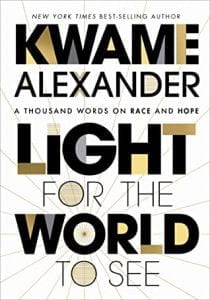 Alexander, Kwame. Light For the World To See: A Thousand Words on Race and Hope. Houghton Mifflin Harcourt, 2020. 978-0-358-53941-4. Unpaged. $14.99. Grades 6-12.
Alexander, Kwame. Light For the World To See: A Thousand Words on Race and Hope. Houghton Mifflin Harcourt, 2020. 978-0-358-53941-4. Unpaged. $14.99. Grades 6-12.
